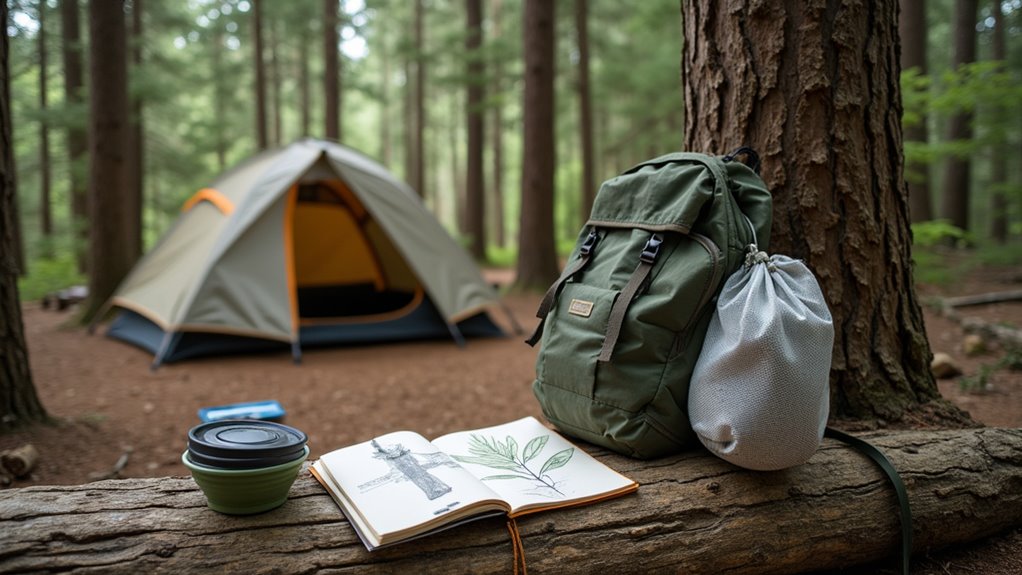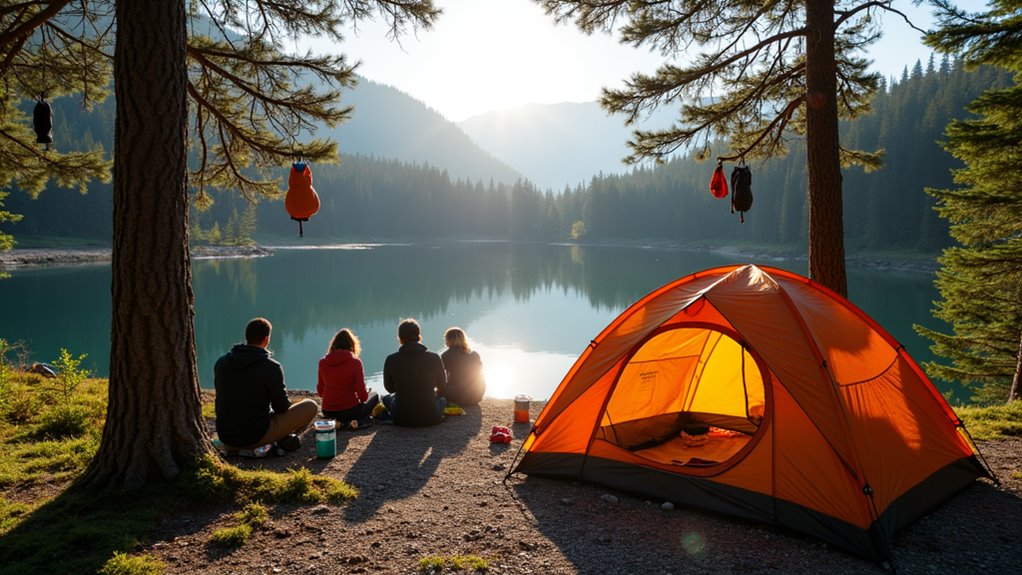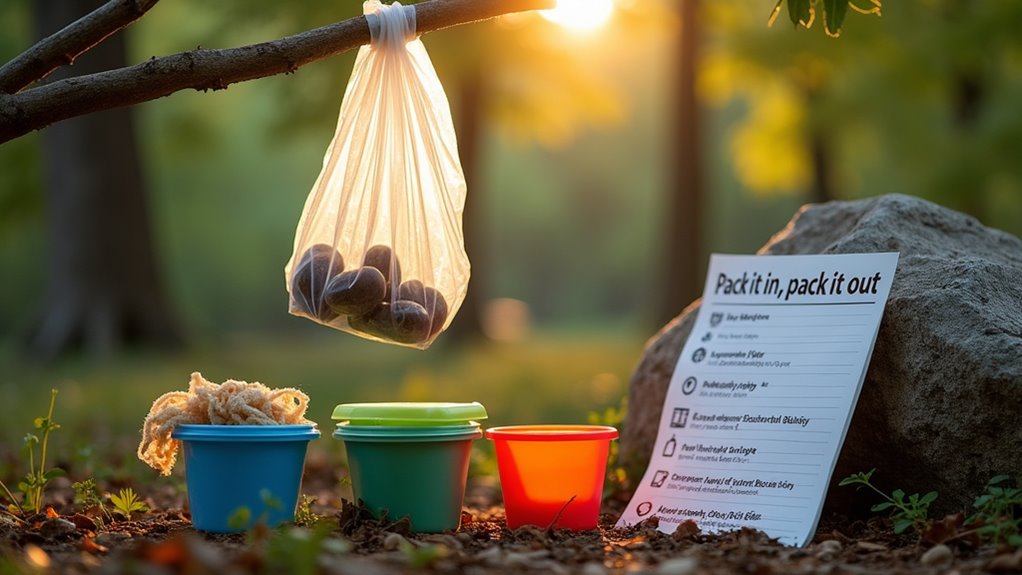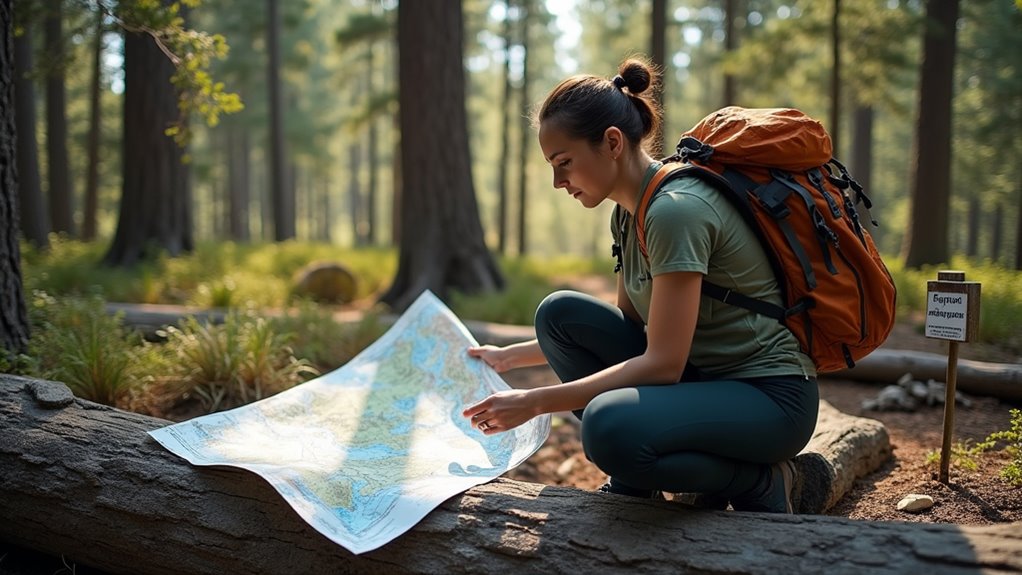Physical Address
304 North Cardinal St.
Dorchester Center, MA 02124
Physical Address
304 North Cardinal St.
Dorchester Center, MA 02124

How to minimize your environmental footprint while camping starts with understanding these essential tips for protecting our cherished wilderness.
You’ve probably noticed the growing movement toward sustainable outdoor recreation, and low-impact camping is at the forefront of this shift. Whether you’re an experienced backpacker or planning your first wilderness adventure, your choices can greatly affect the natural environments you’ll explore. By mastering the essential principles of leave-no-trace camping, you’ll join a community of conscious adventurers who protect and preserve our wild spaces for future generations. Let’s explore how you can make your next camping trip as eco-friendly as possible.

While planning a low-impact camping trip might seem overwhelming at first, thorough pre-trip research and preparation will guarantee you’re ready for an environmentally conscious outdoor adventure.
Start by checking local weather forecasts and regulations to verify you’re camping during ideal conditions and following all guidelines. You’ll need to identify suitable campsites with durable surfaces that can withstand your presence without causing lasting damage to the environment. Consider bringing reusable containers and utensils to minimize waste during your trip.
Research the area’s native wildlife and fragile ecosystems so you can avoid disturbing sensitive habitats. It’s important to be aware of potential encounters with wild animals and take necessary precautions.
Make sure you understand proper waste management procedures specific to your camping location, as different areas have varying requirements.
Don’t forget to review local camping ordinances and restrictions – they’re designed to protect both you and the environment you’ll be enjoying.
Choosing the right camping equipment plays an essential role in minimizing your environmental footprint during outdoor adventures. You should focus on gear that’s both eco-friendly and durable to maximize sustainability while reducing waste.
These choices will greatly reduce single-use plastic waste while ensuring you’re well-equipped for your outdoor experience.

Since your campsite serves as home base throughout your outdoor adventure, selecting the right location can make or break your low-impact camping experience.
Always choose spots with durable surfaces like compacted soil, rock, or sand to minimize environmental damage. You should aim to position your site at least 200 feet from water sources and trails to protect ecosystems and maintain other visitors’ experiences. Respect other campers by ensuring your campsite does not disrupt their experience.
Whenever possible, use established campsites rather than creating new ones. If you’re blazing new territory, look for areas that aren’t home to sensitive vegetation or wildlife habitats. Inspect the area carefully and avoid setting up near unhealthy or dead trees that could pose safety risks during your stay.
Keep your campsite compact and concentrated to reduce your footprint. Before setting up, consider the terrain’s natural features and verify you won’t block access to essential resources for wildlife or fellow campers.
To minimize your environmental impact while camping, you’ll need to embrace sustainable practices across every aspect of your outdoor experience. From the gear you pack to the waste you generate, every decision matters in preserving our natural spaces.
Every choice we make in the wilderness echoes through nature, making sustainable camping practices essential for protecting our outdoor heritage.

When camping in the wilderness, understanding wildlife safety and conservation practices becomes essential for both your protection and the well-being of local animals.
You’ll need to scan your surroundings for animal signs like tracks and droppings, and always keep your food secured in bear-proof containers or hung in trees. Mastering bear safety is crucial for a successful camping trip.
Make yourself known by creating moderate noise while hiking, but avoid excessive sounds that could stress wildlife. You shouldn’t hike during dawn or dusk when animals are most active. It’s important to stay on trails to minimize encounters with wildlife in their natural habitats.
Keep your campsite clean and position it strategically, separating your sleeping area from where you cook and store food.
Don’t forget to carry bear spray in areas where it’s recommended, and always keep pets leashed to prevent wildlife confrontations.
Managing your food and water sustainably while camping requires thoughtful preparation and smart packing strategies. You should aim to minimize waste while maximizing efficiency in your outdoor kitchen setup.
You’ll find that boiling natural water sources can provide safe drinking water without relying on disposable bottles.
Don’t forget to bring only what you’ll actually consume to prevent waste.

Beyond food and water management, proper waste disposal serves as a cornerstone of low-impact camping. You’ll need to separate your waste into three main categories: recyclables, compostables, and non-recyclable trash.
When nature calls, dig catholes at least 200 feet from water sources, or use trench latrines for extended stays. Bringing biodegradable toiletries helps prevent harm to the local ecosystem. Essential tips for responsible camping practices should be followed to ensure the preservation of the natural environment.
Remember the golden rule: pack it in, pack it out. You’re responsible for carrying all your trash back home. Make this easier by choosing camping supplies with minimal packaging and using reusable items like water bottles and utensils instead of disposables.
For organic waste, composting is your best friend – it’ll turn your food scraps into nutrient-rich soil while reducing landfill impact.
Always check your campsite’s specific waste disposal guidelines and use designated facilities when available.
Although campfires create cherished outdoor memories, they require careful planning and responsible management to minimize environmental impact. When planning your campfire, always check local restrictions and choose established fire rings at designated sites.
To maintain a safe and low-impact fire:
When it’s time to extinguish, use water rather than dirt, and don’t leave until the ashes are completely cold. Using a fire pan can help protect the ground from lasting damage and make cleanup easier.
Scatter the cooled ashes away from the campsite and restore the area to its natural state.

When exploring sensitive natural areas, you should aim to carefully balance your desire for adventure with environmental preservation.
Start by researching local regulations, including elevation restrictions and setback requirements for camping near trails and water sources.
Choose your campsite wisely by sticking to durable surfaces like rock, gravel, or previously impacted areas.
In popular locations, use established sites to concentrate impact, but in pristine areas, disperse your use to prevent creating new campsites.
You should aim to stay on marked trails, walking single file in muddy conditions, and never shortcut switchbacks.
Keep your group size within local limits and practice quiet camping to minimize wildlife disturbance.
Remember to monitor conditions constantly – if you notice signs of wildlife stress or deteriorating ground conditions, it’s time to adjust your location or plans.
Set up camp at least 200 feet away from lakes and streams to protect sensitive riparian ecosystems.
Properly breaking down your campsite and restoring the area serves as one of the most essential responsibilities of low-impact camping. You should aim to guarantee you’re leaving the site in the same condition you found it, or even better, by following careful breakdown procedures and restoration practices. Before departing, inspect all vehicles and equipment for signs of invasives to prevent spreading them to other natural areas.
Responsible campers prioritize leaving nature exactly as they found it, preserving wilderness areas for future generations to enjoy.
Remember to use designated trails when departing to minimize additional impact on the surrounding vegetation.
Embracing low-impact camping isn’t just about treading lightly on nature’s doorstep – it’s about becoming a guardian of our wild spaces. You’ll find that by following these mindful practices, from choosing earth-conscious gear to leaving your temporary outdoor home better than you found it, you’re joining a community of responsible adventurers. Remember, your thoughtful actions today guarantee tomorrow’s explorers can discover these pristine wilderness treasures.